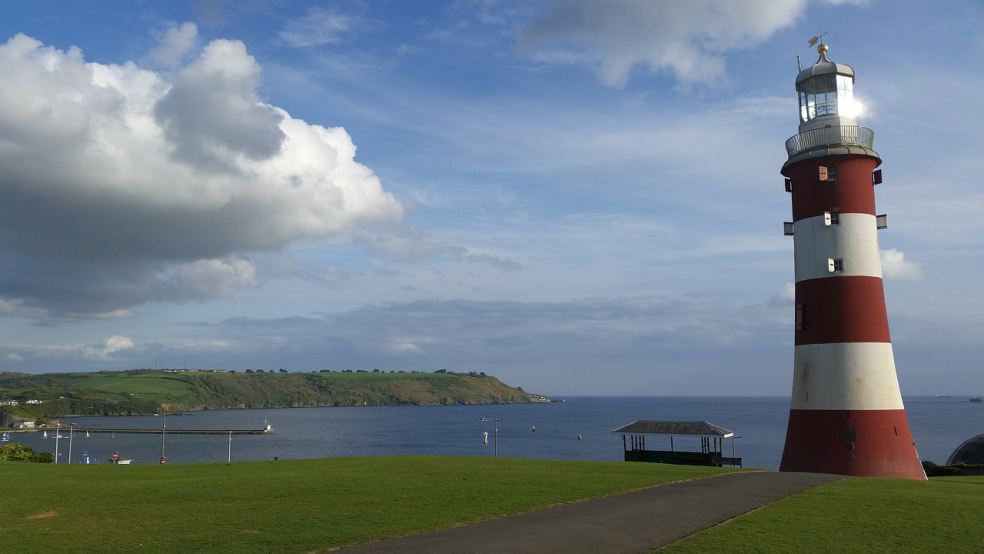
5 Amazing historical sites to visit in Devon
There’s no shortage of historical sites to visit in Britain, and Devon is no exception. Nicknamed 'The English Riviera’, Devon in South West England has plenty of historical and picturesque spots, sandy beaches and breathtaking coastlines. What’s not to love?
And as the day winds down, why not spend the night with some online casino games? Many Brits already use these games as a way to relax and unwind after a productive day. You can even play as you take a quick break during your daily excursions. They’re a great substitute for bricks-and-mortar casinos and in some ways even better, since you get deposit bonuses and you can play from anywhere at any time.
Now, let’s look at five of Devon’s amazing historical sites for you to visit while you’re not at the online casino tables.
Plymouth Hoe
For centuries, Britain boasted one of the world’s strongest navy fleets (if not the strongest!), so it’s only fitting that a maritime-related site is on this list.
With a name that means 'high ground’ in Old English, Plymouth Hoe was where Sir Francis Drake spent his time before sailing to fight the Spanish Armada. According to legend, Drake was playing a game of bowls at the Hoe when he heard of the Armada’s sighting in the English Channel.
Nowadays, the Hoe is a nice, relaxing area for a picnic while soaking up the views of Plymouth Sound. If you prefer staying on your feet, you can visit the Smeaton’s Tower lighthouse and pay the small fee to go up to its lantern room.
Of course, make sure you don’t miss the various statues and monuments on the Hoe: Drake’s statue, the Armada monument, the Unknown Airman monument (dedicated to the Royal Air Force and Allied Air Forces soldiers during World War II), and the Plymouth Naval Memorial for the sailors of the First and Second World Wars.
The Mayflower Steps
Close to the Plymouth Hoe are the Mayflower Steps – a site dedicated to where the Pilgrims were believed to have set sail on the Mayflower in 1620.
The name is rather misleading, however, because there aren’t any actual steps onsite. The original steps that the Pilgrims walked on have been lost to time; instead, a commemorative granite block and tablet serve as site markers for the historic place.
A commemorative portico with a small platform over the water depicts the Pilgrims’ final departure point before sailing. British and American flags on each side of the portico fly proudly to signify the importance of what the Pilgrims achieved.
Tiverton Castle
This castle has witnessed many historical events since its completion in 1106. Most remarkable is that the estate that predates the castle was already earmarked for such a property even before the Norman conquest. How’s that for a storied site?
Sitting on a cliff overlooking the River Exe, Tiverton Castle witnessed several changes of owner, some of which were thanks to the War of the Roses and Henry VIII’s ever-changing mind. The castle was even under siege during the Civil War in October 1645, when Sir Thomas Fairfax and his Parliamentary troops took the castle.
Nowadays, the castle is privately owned but is open to the public for tours and visits during certain times of the year. Unfortunately, the site is no longer available for weddings or other functions; the castle’s walled garden and overall historic feel would make for perfect wedding photos.
Drizzlecombe
You’ve undoubtedly heard of Stonehenge, but have you heard of Drizzlecombe?
Unlike the other sites on this list, Drizzlecombe’s history goes even further back – all the way to the Bronze Age. Located near the villages of Sheepstor and Yelverton, Drizzlecombe boasts a collection of Bronze Age artefacts, enclosed settlement huts, terminal standing stones and burial mounds.
Considering the age of these artefacts and structures, it’s wonderful that the Drizzlecombe site remains relatively unchanged. Any history-lover will love basking in the presence of these creations that are a few thousand years old.
Exeter Cathedral
Even if you’re not religious, Exeter Cathedral is a sight to behold. Whether you’re enjoying the sunshine in the surrounding Cathedral Green or admiring the impressive architecture and stonework, Exeter Cathedral has something for everyone.
What’s even more impressive is the cathedral’s history. Some of its towers date back to Norman times – around the 1100s to 1200s. The site was also a former Roman bathhouse and is one of the country's best-preserved sites. Unfortunately, the Roman baths are not open to the public yet, so you’ll have to wait a bit before seeing them.
The site was also damaged in 1942 during a German bombing raid; thankfully, the damage wasn’t enough to take the cathedral down.











